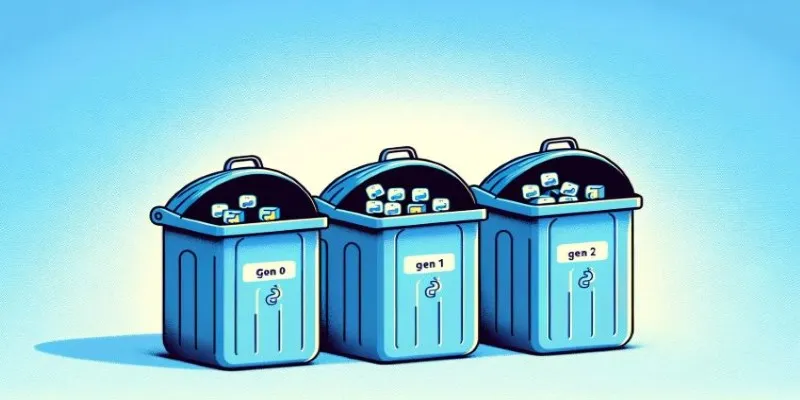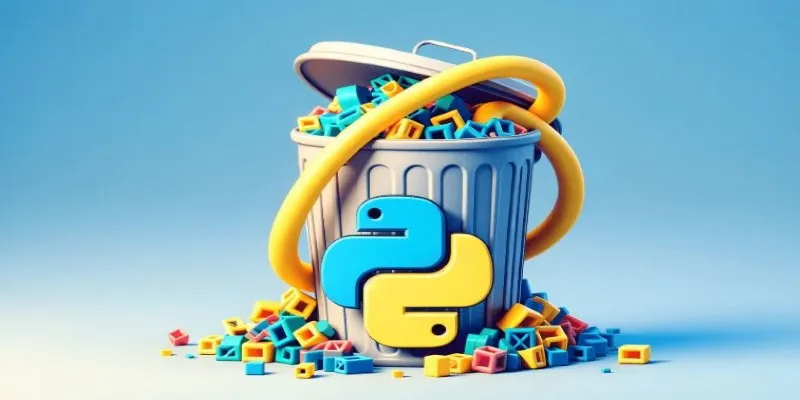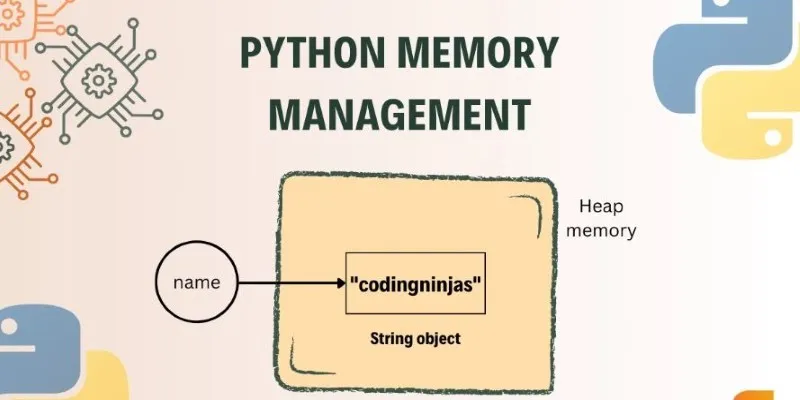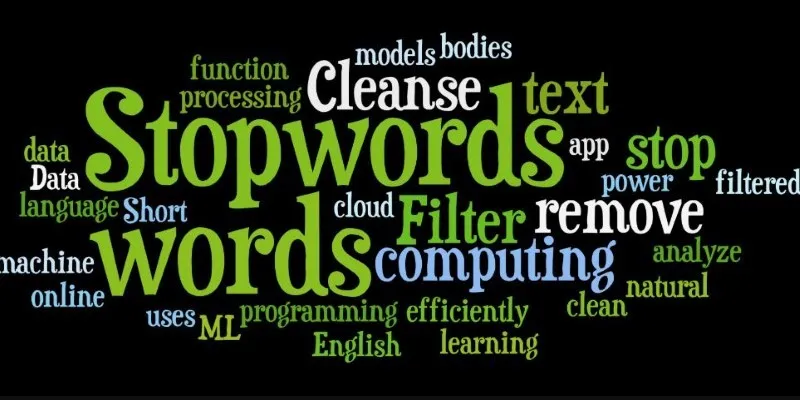Python handles a lot of the heavy lifting for you. You write code. It runs. Most of the time, you don’t have to think much about what happens to old variables or unused data. But behind the scenes, something important is going on to keep everything clean and efficient. That’s where garbage collection in Python comes in.
It’s a system designed to free up memory by automatically removing things your program no longer needs. It helps prevent your system from slowing down or crashing due to memory bloat. The best part is that it runs quietly in the background—unless you want to get your hands dirty and take control of it yourself.
How Python Manages Memory in the Background
To make sense of garbage collection in Python, you first need to have a general idea of how memory is managed. Each time you assign a variable, a list, or any sort of object in Python, it occupies some amount of space in your computer’s memory. As your program continues to run, some of these objects become useless—perhaps you overwrite them, or maybe they will fall out of use. If Python retained all of them, your memory would become full in no time.
This is where Python memory management steps in. Python uses a system based on something called “reference counting.” Every object keeps track of how many places are still using it. If that count drops to zero, meaning nothing is using the object anymore, Python realizes it can safely dispose of it. That object is referred to as “garbage.”
But reference counting doesn’t cover all cases. Occasionally, objects point back at each other in a loop, and you’re not using them anymore, but they still have references to each other. These are circular references. Python’s simple system can’t deal with those by itself. That’s why Python has a garbage collector: a program that detects and sweeps away these abandoned chunks of memory.
The Garbage Collector and How It Works

The garbage collection in Python is handled by a module called gc. It’s not just a tool—it’s a process that watches your program and looks for objects you’ve stopped using, even if they’re in a cycle. The garbage collector works in “generations.” This strategy is built on the idea that most garbage is created and destroyed quickly, but some objects stick around longer.
Python separates objects into three groups:
- Generation 0: Newest objects. These are checked often.
- Generation 1: Objects that survived the first round.
- Generation 2: Objects that survived longer and are less likely to be removed.
When Python collects garbage, it starts with generation 0. If objects in that group are still around, they get promoted to the next generation. Objects in generation 2 are rarely checked unless things get tight.
The garbage collector only runs at certain times, not every second. You can force it to run using the gc.collect() function. But in most cases, Python decides when to do it based on how many new objects have been created and how many survived the last sweep.
You can even turn garbage collection off for performance testing, or if you want to manage memory yourself. Though most people won’t ever need to do that, the option exists.
Common Scenarios Where Garbage Collection Matters
If you write simple scripts or small programs, you probably never need to think about garbage collection in Python. However, it becomes more important in large or long-running applications, especially ones that work with a lot of data in memory. Here’s where it can really help or cause trouble.
Let’s say you build a web scraper or a data analysis tool. These kinds of programs often store large chunks of data in lists, dictionaries, or other structures. If you forget to release some data after using it, memory usage climbs. Even if you’re not actively using the data anymore, your program might hang onto it. The garbage collector helps clear out that clutter if you’ve left circular references behind.
There’s also the case of custom classes. When you build your object types, and those objects reference each other, Python’s memory management by itself won’t clear them out unless the garbage collector steps in. Sometimes, using special methods like __del__() in your class can interfere with garbage collection. If Python sees a __del__() method, it might not be sure what to do when objects reference each other, so it leaves them in memory. That’s another time when you might want to manually control the collector.
One more thing—watch out when writing code in loops or callbacks where large objects are created again and again. You may think Python is handling it all, but over time, garbage collection might not be fast enough, especially if you’re generating circular references. Keeping an eye on memory usage in those scenarios is a smart habit.
Working With the GC Module in Real Code

Python gives you a way to interact directly with its garbage collector, mostly used in debugging or performance tuning. First, you import the module:
import gc
You can check if the garbage collector is running:
print(gc.isenabled()) # Should return True
You can turn it off temporarily:
gc.disable()
And turn it back on:
gc.enable()
To run it manually and force collection:
gc.collect()
If you want to see what’s taking up memory, you can use gc.get_objects() to list everything the garbage collector knows about, or gc.get_stats() to get breakdowns by generation. These tools are useful when profiling memory in big projects.
This kind of manual control is part of why Python is so flexible. You don’t usually need to worry about it, but when things get complicated, the control is there.
Conclusion
Garbage collection in Python helps manage memory by clearing unused objects automatically. It works silently through reference counting and cycle detection. While most users never touch it, understanding how it functions can prevent memory leaks in large applications. With the gc module, you can monitor or control it when needed.
 zfn9
zfn9























